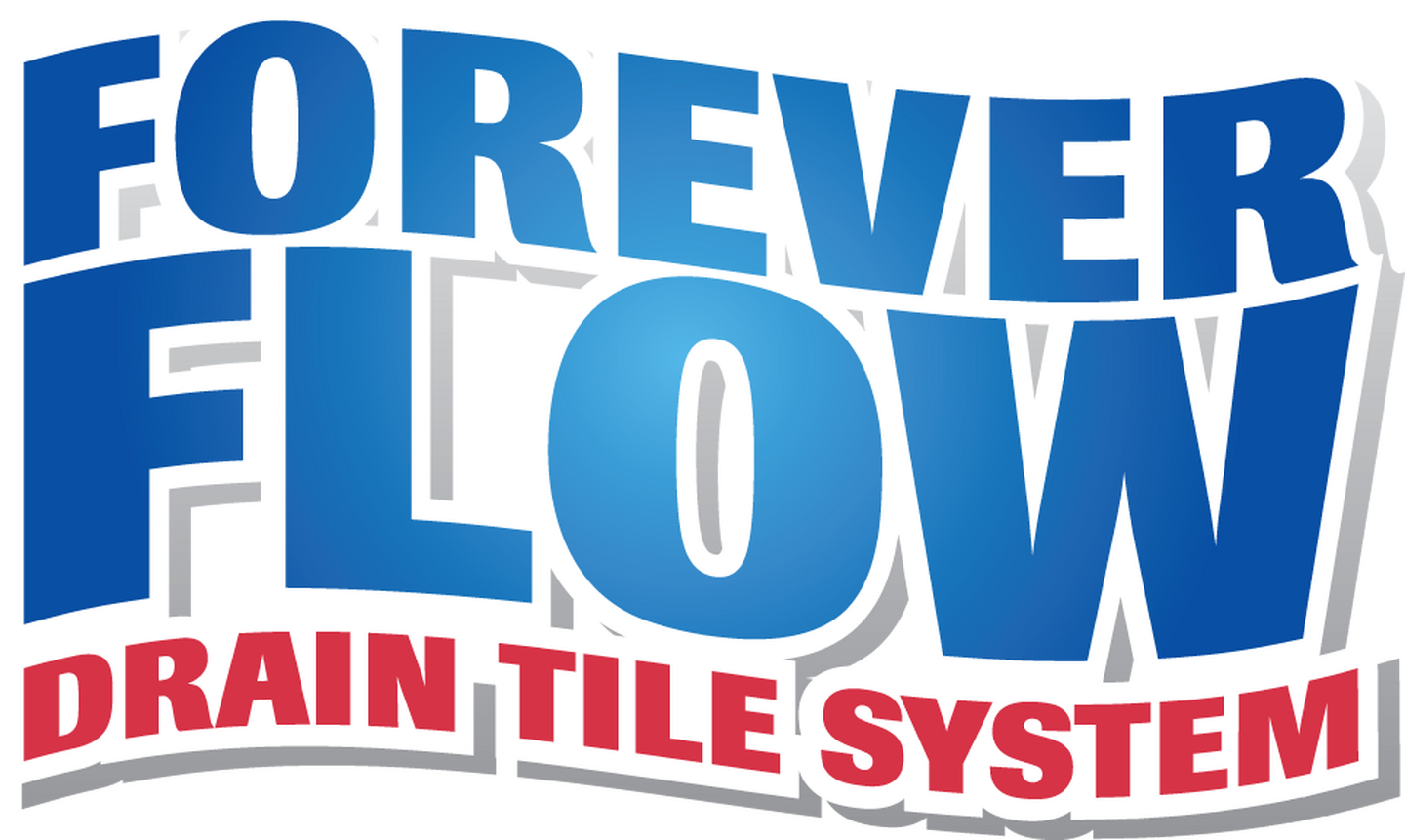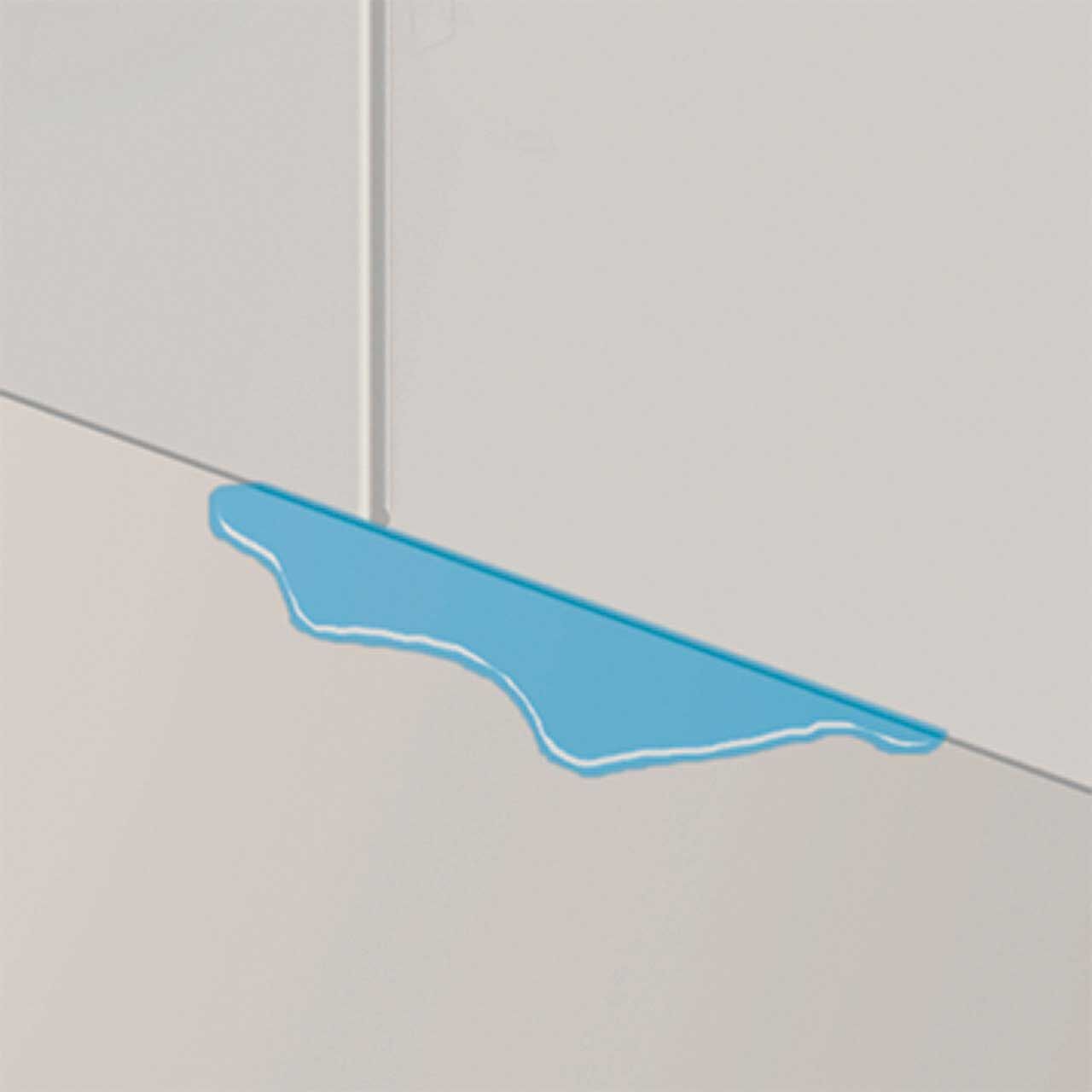Problem:
Cove Joint Seepage
The cove joint is the juncture where the floor and wall meet. With heavy or prolonged rains, ground water along the foundation walls and underneath the basement floor can rise, allowing water to seep upward through this joint. This is commonly referred to as hydrostatic pressure.
Sealing the cove joint is usually not recommended, as it will only allow the pressure to build and move elsewhere. Instead, our Basement Advisor will recommend installing a Drain Tile System, which is a perforated pipe embedded in washed stone installed beneath the level of the floor. The system can be installed from either the interior or exterior.
An Interior Drain Tile System is the most common basement waterproofing solution for cove joint seepage. The system relieves the upward pressure by collecting the water beneath the floor and directing it to a sump pump.
An Exterior Drain Tile System can also be used to address cove joint seepage. The main difference, however, is that the hydrostatic pressure is relieved on the exterior. This requires that the wall(s) be excavated.
Your Basement Advisor will be happy to discuss with you the benefits of each waterproofing system. Either system will accomplish the same end result – a dry basement!
Solution:
Interior Drain Tile System

A functional drainage system is key to having a dry basement or crawlspace. A drainage system is commonly referred to as Drain Tile (which is not like a floor tile!) and is an important water management tool. Drain Tile is simply a perforated drainage pipe sometimes called a French Drain. At the time a home is typically constructed, a Drain Tile System is installed on the exterior of the foundation at the deepest part of the excavation next to the footing (the widened concrete base the foundation walls rest on). The Drain Tile is typically connected to a sump pump located in the interior of the home which collects and discharges the water harmlessly away from the building.
Over time Exterior Drain Tile Systems fail due to the elements. Small particles mixed in with the soil (fines or silt) can find their way into the system and cause recurring clogging issues. Also tree roots can infiltrate making the system ineffective.
What is an Interior Drain Tile System?
An Interior Drain Tile system serves the same purpose as an exterior system except it is less impacted by the elements. Installed on the inside of the home next to the foundation’s footing and beneath the basement floor. This system provides a much longer life expectancy at a lower installed cost.
This system addresses seepage by collecting water that comes up from beneath the basement floor and through foundation walls.
How is an Interior Drain Tile System installed?
U.S. Waterproofing’s Forever Flow Drain Tile System provides a dual filtration process which makes it a permanent maintenance free solution for keeping your basement or crawlspace dry.
The system is installed by removing the edge of the concrete floor (about a foot from the foundation wall). Once the floor is removed, a trench is dug alongside the footing and a layer of washed stone is placed at the base of the trench. A 4‑inch perforated pipe (Drain Tile), protected by a filter sock, is laid in the trench and then surrounded with more washed stone.
Our system is then connected to a sump basin where a sump pump discharges the water to a suitable location.
While many homes are equipped with a sump pump that can handle this additional water, some are not. U.S. Waterproofing offers a full line of both primary sump pumps and battery backup sump pumps as well as basins that we can size to your needs.
Unique to the waterproofing industry our exclusive Hollow Cove Molding (an L — shaped vinyl baseboard) is installed atop the footing against the foundation wall. Any seepage from the foundation wall will drain down behind the cove molding and into the Forever Flow Drain Tile System.
The floor is then patched with concrete to complete the installation.
Why choose U.S. Waterproofing?
Total peace of mind. We start with a free in-home consultation where one of our highly trained Advisors will provide you with a proper diagnosis, detailed repair plan, and cost of repair.
Next, we assign a Field Supervisor to visit your home and review the project. Your Field Supervisor can answer all your questions prior to scheduling the work.
We know home improvement projects can be overwhelming, especially if your basement is finished. To lessen your stress we also offer a full line of job prep services to help you through the completion of your project.
Our Forever Flow Drain Tile System comes with a lifetime transferrable warranty (for residential homeowners). Since 1957, U.S Waterproofing has been committed to unmatched customer service and getting the job done right the first time. We stand by our work and have over 500,000 satisfied customers to our name. To find out if Interior Drain Tile is the right solution for your home, schedule your free consultation online today!
Learn more about Interior Drain Tile Systems.
Solution:
Exterior Waterproofing Membranes
U.S. Waterproofing is a comprehensive, full service waterproofing company. What we mean by that is we don’t believe in a one-size-fits-all solution. In many situations, we have found that exterior waterproofing is the most effective solution as it stops water filtration right at source of the problem.
What are Exterior Waterproofing Membranes?
An Exterior Waterproofing Membrane is a waterproof barrier applied below ground and to the outside of the foundation. This is sometimes done with solid sheets to prevent water from entering, but sheets create seams, and those seams cause leaks over time that let water into your home. Instead, we use a flexible, seamless, polyurethane liquid membrane that is applied with a hand trowel. Once the material cures (dries), it provides a seamless coating that doesn’t leak and is impenetrable to water.
When would Exterior Waterproofing Membranes be used?
It’s sometimes impractical or undesirable to waterproof a basement from the interior. Below are reasons for Exterior Waterproofing Membranes:
- Seepage over the top of the foundation — if the dirt or paving level reaches above the top of the foundation wall, it may allow water to seep into your home through the joint where your house sits atop the foundation
- Honeycombed concrete — Honeycombed concrete can form as soon as the foundation is constructed and usually exists because the concrete was mixed and consolidated poorly, leaving areas of the foundation wall that is jagged, coarse, and stony. These porous areas are common areas for water intrusion
- Masonry foundations — when a home has a brick or stone foundation—often the case in older homes — the mortar holding these walls together erodes due to water and can crack over time. An Exterior Waterproofing Membrane is the preferred method as interior waterproofing only traps the water and does nothing to prevent further deterioration of the wall
- Preserving the basement and its many functions — a finished basement is often used by the whole family, be it kids playing down there or adults enjoying a home theater or a bar. Exterior Waterproofing Membranes doesn’t require paneling / drywall removal, or other construction inconveniences, which means your basement stays intact and undisturbed
How does Exterior Waterproofing work?
When excessive rain soaks into the soil, it creates waterproofing problems. The process of attacking the root of the issue starts with digging a trench outside the foundation, which is usually done by hand to minimize disruptions to landscaping and other areas around your home. We then apply a heavy-duty membrane coating that covers the foundation wall. Once that protective coating dries, a seamless barrier is formed to keep water out. Lastly, we backfill the trench with the excavated soil.
When would Exterior Waterproofing not be the best solution?
Sometimes, there are obstructions on the exterior that are either too costly or impractical to move. Examples include decks, additions or attached garages. We also need enough space to dig a trench and temporarily store the excavated earth. Lastly, if water is seeping through cracks in your basement floor, an Interior Drain Tile System might be the better solution.
If you think your house might benefit from exterior waterproofing, or would like further guidance, schedule your free consultation online today.









